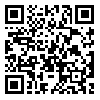Volume 1, Issue 2 (1-2020)
مطالعات فقه و حقوق رسانه 2020, 1(2): 31-49 |
Back to browse issues page
Download citation:
BibTeX | RIS | EndNote | Medlars | ProCite | Reference Manager | RefWorks
Send citation to:



BibTeX | RIS | EndNote | Medlars | ProCite | Reference Manager | RefWorks
Send citation to:
Cybercrimes Against Iranian Families: A Sociocultural Perspective. مطالعات فقه و حقوق رسانه 2020; 1 (2) :31-49
URL: http://journal.refah.ac.ir/article-1-27-en.html
URL: http://journal.refah.ac.ir/article-1-27-en.html
Abstract: (1590 Views)
The present research aims to study and investigate cybercrimes against Iranian families from a social and cultural perspective, using a descriptive-analytical method. In this study, while providing a history of cybercrimes, the characteristics and differences of this category of crimes compared to other crimes, their types, statistics, and existing laws in this field, we examine cybercrimes that threaten Iranian families with a social and cultural approach. We familiarize ourselves with the most common crimes that occur in this context, the concept of crime and criminality in cyberspace, the grounds for committing cybercrimes, target groups, and those vulnerable to these crimes from a social and cultural perspective. The research results indicate that due to the expansion of cyberspace, the reduction of the age of presence and use of it, the penetration rate of the internet, cyberspace, and social networks among different strata of society, the abundant facilities and advantages of cyberspace, and its apparent and content attractions, we are witnessing a growing trend of cybercrimes in the country. Therefore, we can consider cybercrimes, like other social and cultural issues and challenges, as a threat to Iranian families that requires prevention, control, and confrontation through targeted and practical methods and tools.
Type of Study: Research |
Subject:
General
Received: 2019/10/4 | Accepted: 2019/12/1 | Published: 2020/01/4
Received: 2019/10/4 | Accepted: 2019/12/1 | Published: 2020/01/4
| Rights and permissions | |
 |
This work is licensed under a Creative Commons Attribution-NonCommercial 4.0 International License. |

